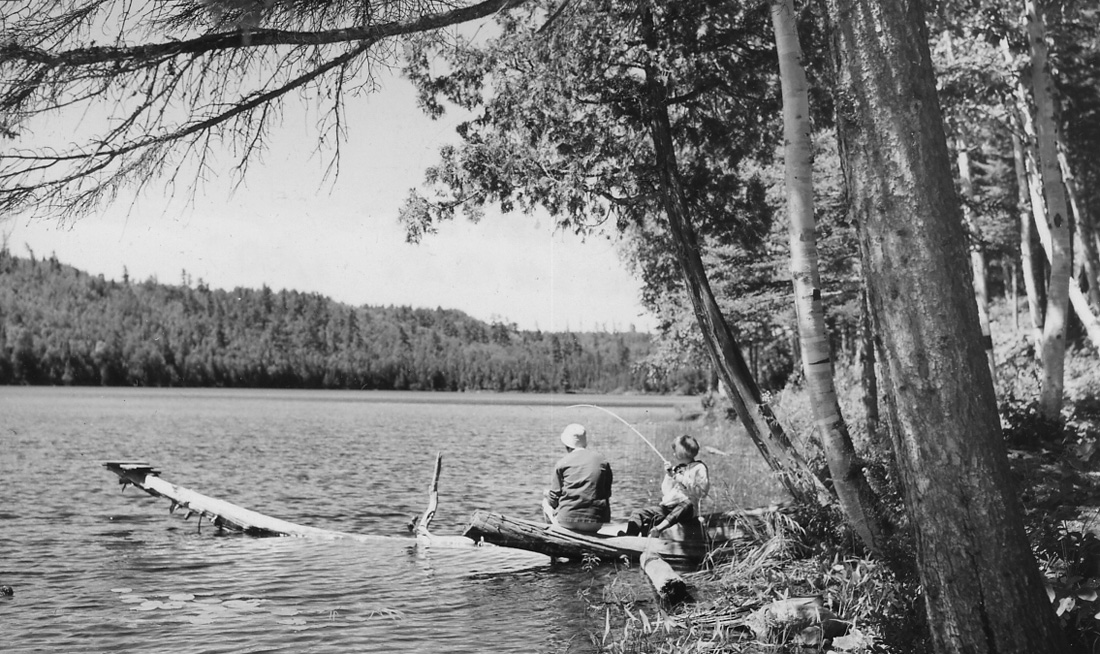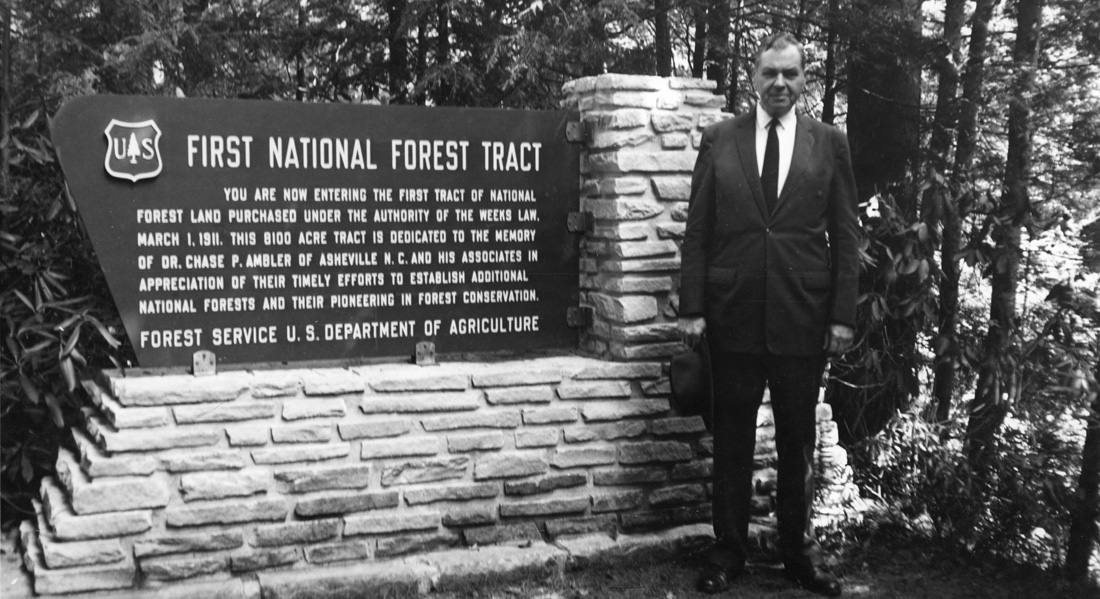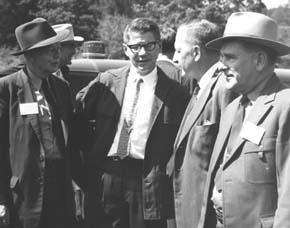Impact and Legacy
On January 12, 1961, President Dwight Eisenhower established the last two national forests created under the Weeks Act, the Uwharrie in North Carolina and the Delta in Mississippi. When the Forest Service celebrated the 50th anniversary of the Weeks Law later that year, more than 20 million acres of forest and watershed lands had been purchased or exchanged under the Weeks Act. The "lands nobody wanted" were now the core of national forests in the Southern and Eastern regions—with national forests having been established or expanded in 25 eastern states under the Weeks Act.

Fishing at East Bearskin Campground on Superior National Forest, Minnesota, July 1960.
Like all national forests, the Weeks Act national forests are managed by the U.S. Forest Service as "working forests." They are perhaps best known to the general public for their diverse recreational offerings and striking beauty, as destinations for long family vacations or a just day trip. In fact, sixty percent of all Americans live within a day’s drive of an eastern national forest. Chief Dale Robertson highlighted those offerings at the 75th anniversary celebration: "Not only can people enjoy hiking along the Appalachian Trail on the White Mountain, George Washington, Jefferson, Pisgah, Cherokee, and Chattahoochee National Forests, but also enjoy canoeing the lakes and streams of the Superior National Forest in Minnesota, hunting in the loblolly pine and cypress flats of the Kisatchie National Forest in Louisiana, or camping and picnicking in any one of the 50 National Forests throughout the East."
A working forest, though, is more than just a vacation spot. A working forest means that the forest is being managed for many different uses and reasons. The Forest Service often works with non-government organizations, conservation and environmental groups, and private landowners to meet its varied and numerous management goals. The eastern national forests remain important sources of timber and non-timber forest products, including medicinal and floral plants like ginseng and galax. Coal, natural gas, and other mineral resources are also extracted from various national forests. The experimental forests and research stations established on these same national forests in the early part of the twentieth century continue to provide data to scientists doing research on everything from invasive species to climate change. The Forest Service is also carrying out restoration work like planting, thinning, or prescribed burns. And, of course, the national forests still provide watershed protection as originally intended.

Forest Service Chief Richard E. McArdle stands beside sign marking the first forest tract purchased under the Weeks Act. Photo taken as part of Weeks Act 50th Anniversary activities on Pisgah National Forest, 1961.
Additional Resources
Events program from the Weeks Law 50th Anniversary commemoration in Asheville, NC, September 26-27, 1961. [PDF]

James Vessey, Orville Freeman, and others at 1961 Weeks Act 50th Anniversary (click to enlarge).
Speech notes from address given by USFS Chief Richard E. McArdle at observance of the Weeks Law 50th Anniversary, Asheville, NC, September 26, 1961. [PDF]
Remarks of Secretary of Agriculture Orville L. Freeman at observance of the Weeks Law 50th Anniversary, Asheville, NC, September 26, 1961. [PDF]
Program from Weeks Act 50th Anniversary Banquet, Crawford Notch, New Hampshire, October 6, 1961. [PDF]
Address given by USFS Chief Richard E. McArdle at celebration of 50th anniversary of Weeks Act, Crawford House, New Hampshire, October 6, 1961. [PDF]
A Report in Progress in Establishing National Forests, Published on the Occasion of the 50th Anniversary of the Weeks Law. [PDF]
A 1961 report by the U.S. National Forest Reservation Commission on the first 50 years of national forests established under the Weeks Act (Source: U.S. Forest Service Lands and Realty Management Program).
Remarks of USFS Associate Chief F. Dale Robertson at the 75th Anniversary of the Weeks Act, White Mountain National Forest, June 19, 1986. [PDF]
Ice, George G. and John D. Stednick. "Forest Watershed Research in the United States," from Forest History Today, Spring/Fall 2004: 16-26. [PDF]
Looks at the history and importance of forest watershed research conducted by the U.S. Forest Service.

Thousands of acres formerly part of the Biltmore Estate in North Carolina were purchased under the Weeks Law to become part of Pisgah National Forest.

